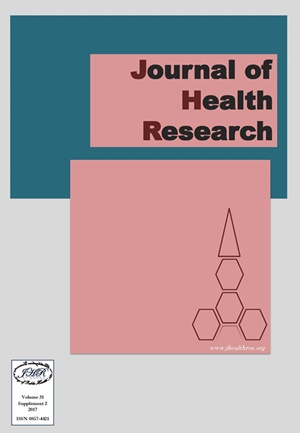Molecular Analysis of Pfmdr1 Gene in Plasmodium falciparum in Thai-Cambodia Border
Keywords:
Real-time PCR, Pfmdr1, Plasmodium falciparum, Drug resistanceAbstract
Background: Drug resistant Plasmodium falciparum is a major problem for malaria control. Policy makers currently depend on in vivo and in vitro test to adjust antimalarial regimens for malaria treatment guideline.
Methods: These two methods are required expertise for interpretation and time consuming. Therefore, the alternative reliable molecular markers of antimalarial resistance could also play an important role in the surveillance of drug efficacy. Pfmdr1 gene has been shown to be a reliable marker of resistance for P. falciparum related to artesunate and mefloquine combination therapy. The propose of this study are to investigate the prevalence of P. falciparum multidrug resistance by determined Pfmdr1 point mutations at codon N86Y, Y184F, S1034C by PCR-RFLP and investigated Pfmdr1 copy number by using real-time quantitative PCR with TaqMan and compared to efficacy of ACTs (Artemisinine Combination Therapies).
Results: Seventy-three infected blood samples were collected from the therapeutic efficacy of ACTs project tested in 2 provinces in malaria endemic areas of Thailand which are Chantaburi and Trat. The results showed that in Trat province exhibited the higher percentage of P. falciparum with three or more copies of Pfmdr1 than in Chantaburi (27.27% and 0%, respectively). The mean of Pfmdr1 copy number in P. falciparum collected from Trat and Chantaburi provinces were 2.2 and 1.5 respectively. In contrast, there was no mutation in Pfmdr1 gene in P. falciparum from Trat whereas in Chantaburi found point mutation in N86Y (20%, n=15), S1034C (28.57%, n=7) and no mutation was found in Y184F both in P. falciparum collected from Trat and Chantaburi.
Conclusion: These results were correlated to the ACTs efficacy test. Pfmdr1 mutation and copy number may be used as a high throughput tool to investigate the role of drug resistance of malaria parasites in laboratory studies or large scale epidemiological surveys.







